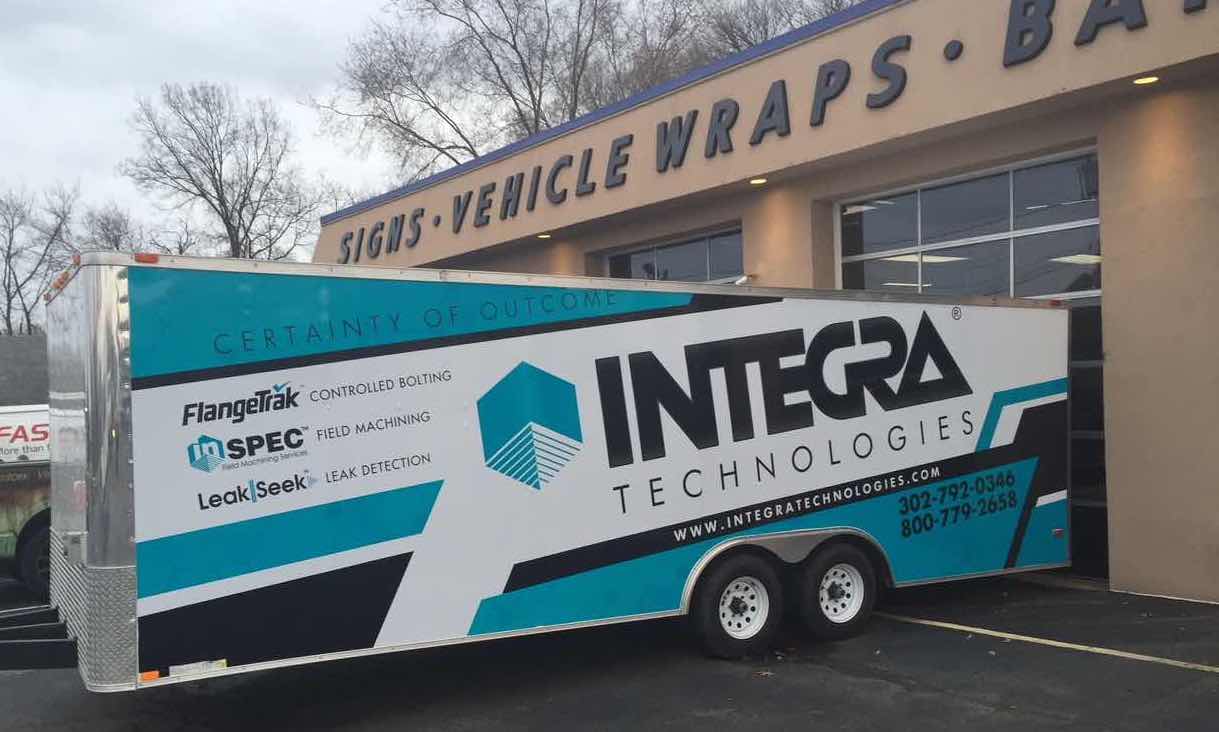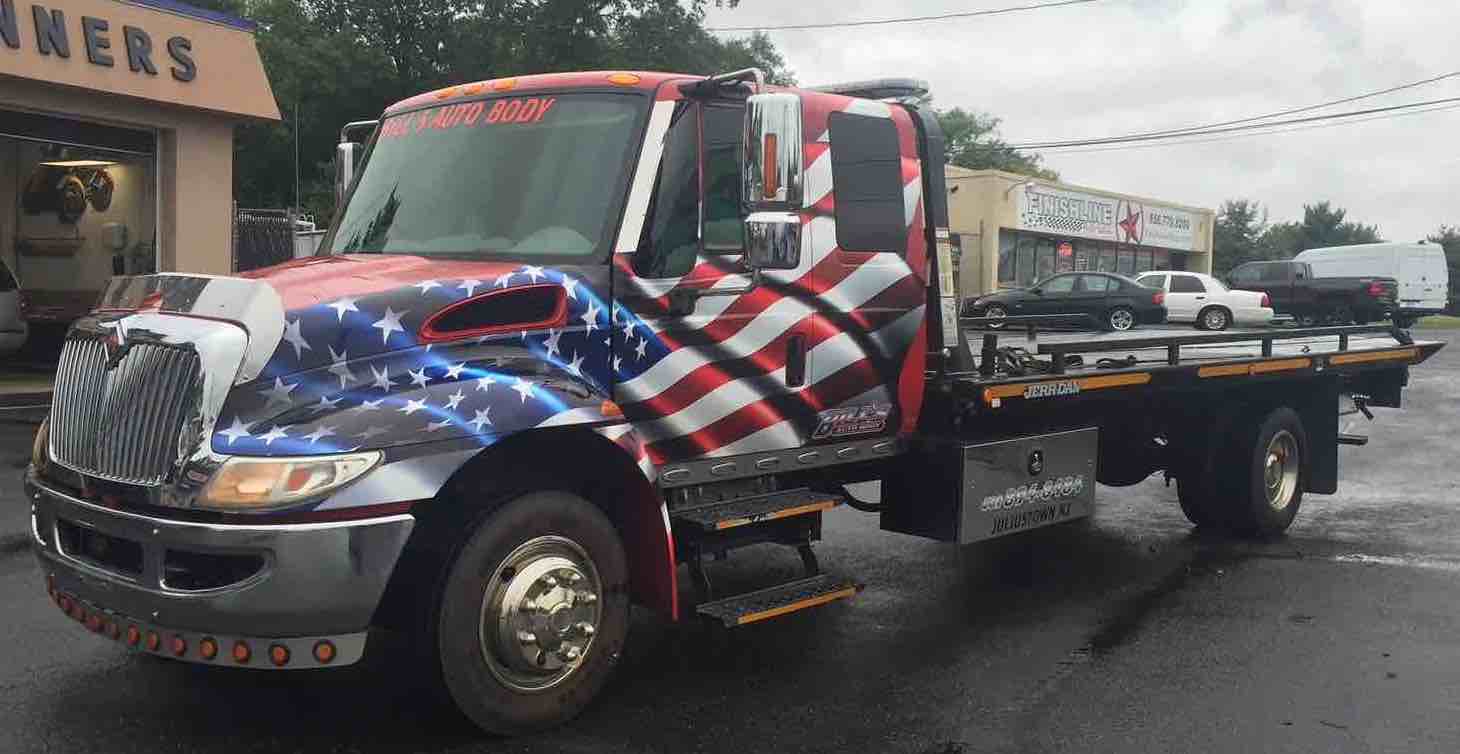FASTSIGNS® of Maple Shade relies on SAi Flexi for flexibility and smooth production integration
In more than 30 years as a signmaker, Jeffrey Chudoff, owner of FASTSIGNS® of Maple Shade, New Jersey, has witnessed the transformation of vehicle graphics printing. Indeed, he has been one of those who helped drive the evolution, and SAi Flexi was one of the enablers.
With a background in business, brand management and marketing, Chudoff began tinting glass for a range of vehicles from muscle cars to pick-up trucks. Responding to requests for names on windshields, in 1985 he began supplying and installing cut vinyl lettering. Initially this was out-sourced, but in 1986 he bought his first tangential cutter to bring the process – and control – in house.
“That was the beginning of it all,” Chudoff says. “As large format printing for vehicle wraps developed in the early 1990s, I’d put designs on CDs and mail them to Kansas for printing electrostatically. The breakthrough came in 1995 when I bought my first Roland large format inkjet printer at the USSC show.”
Adding the large format printer enabled Chudoff to cut production times, increase margins and accelerate the development of his business. He outgrew the 400 sq. ft. garage where he had been operating and moved to his current 3,200 sq. ft. location – which also has the benefit of being on a highway with 350,000 vehicles passing weekly. The company currently has two Roland printers, an XR-640 and an RF-640.
“While the quality of our work was always high, the software tools for design and workflow could be tricky to use and not especially suitable for vehicle wraps and graphics,” he explains. “We began using SAi Flexi in about 2000, and the tools it has for handling different file formats, colour matching and efficient management of jobs is great.”
FASTSIGNS® of Maple Shade has two subscriptions for Flexi software. “We can afford two because of the price difference for the options. We use one just for designs while the full version is connected to the printers,” he says, adding, “And they’re both always up to date.”
The right tools for the job
“Flexi has lots of clever features. For example, if you are processing a large number of similar pieces, there are short-cut keys that mean you don’t have to go through drop-down menu options again and again,” he says. “Incorporating photographs and artwork from different sources is easy and ensures that we get what we design. I like to say that Flexi plays well in the graphics playground!”
Chudoff also likes the way Flexi’s clean-up tool can be used to separate a logo from a background to prepare graphics suitable for vehicle wraps. “Sometimes people don’t have logo files,” he explains. “We have to scan a letterhead and work from that. The clean-up tool simplifies the process and means that we can get a result that the customer loves.”

Additionally, he uses Flexi to produce other signage and photographic wall murals with logos and special effects incorporated. This enables him to exercise creativity, recognise opportunities, and find the best way to produce what the customer wants.
Chudoff is not wedded to any particular process. He will use the techniques necessary to realise the concept, and his numerous awards from industry magazines attest to his success. At one time he discovered that automatic photo-processing kiosks, like those found in shopping centres, were capable of printing business cards. He was able to use artwork being prepared for a vehicle wrap to print them, giving his customers a more complete and consistent branding package.
For the record – the importance of vinyl
Cut vinyl still accounts for about 40 percent of Chudoff’s jobs. As in many states, New Jersey requires owner information on commercial vehicles and many customers are small one-man operations that don’t want or need a wrap, so the cut vinyl solution is enough.
The state requires the owner’s name and the name of the municipality where his principal place of business is located, and this must be in letters not less than three inches high. Other customers, explains Chudoff, see vehicle wraps as an important tool for their marketing and brand identity.
On this subject, Chudoff is passionate about the role of the signmaker. “Vehicle wraps have a particular job to do,” he says. “Viewers have about six seconds to take in the information on a moving car or truck. That information should help the process of remembering them. That can be a logo, a graphic, a photograph, or a typeface. The right combination of a photograph with words can mean that it’s 87 percent more likely to be remembered.”



According to Chudoff, setting out these elements and achieving the right colour is facilitated by Flexi and makes achieving the desired effect much easier. “It takes people who know about vehicles to do this properly,” he says. “Following corporate guidelines written by people without the right understanding of vehicles and their variations can result in key elements being placed in difficult-to-read positions and failing to communicate the message.”
Chudoff also believes that the right vehicle wrap shop can give advice on the best approach, too. For example, in some circumstances, a partial wrap might be just as effective as a full one and save the customer money. As a result, he might then be prepared to buy some other signage.
Building family relationships
Chudoff operated as an independent sign shop until 2016 when he became part of the FASTSIGNS® family (#2115). “I was amazed at the difference it has made,” he says. “We receive calls and opportunities that we’d never had before. People like the consistency of the experience and if they have had good results from one FASTSIGNS® shop, they will recommend the brand to colleagues and friends elsewhere.”
Chudoff also believes that the industry has come a long way in the last 30 years. In his eyes, colour quality and durability, print speeds, substrates, photographic reproduction, and of course, software and workflow development, have contributed to what is a whole new market segment.
Despite the developments, he also thinks that the industry needs to keep up the levels of training to ensure that younger people learn the techniques of creating quality wraps and installing them properly. “There is now a sophistication in this market that didn’t exist when I began, and it requires a much more professional approach – and it is important to keep the bar high,” he explains.
Having the right tools is part of that picture. “Flexi is a versatile software that can integrate input and output software and devices in a way that is intuitive and meets the needs of busy sign shops,” Chudoff concludes. “That’s one of the reasons I really like it: you can tell that Flexi wasn’t designed by boffins in a lab but by people who are signmakers and who fully understand how we work and what we need.”